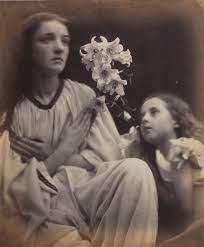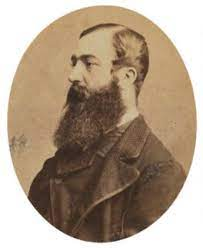Camera Obscura
A camera obscura is a darkened room with a small hole or lens at one side through which an image is projected onto a wall or table opposite the hole. Camera obscura can also refer to analogous constructions such as a box or tent in which an exterior image is projected inside.
Photography did not spring forth from nowhere: in the expanding capitalist culture of the late 18th and 19th centuries, some people were on the look-out for cheap mechanical means for producing images […] photography emerged experimentally from the conjuncture of three factors: i) concerns with amateur drawing and/or techniques for reproducing printed matter, ii) light-sensitive materials; iii) the use of the camera obscura
Steve Edwards, Photography – A Short Introduction

Ibn al-Haytham(965–1039), an Arab physicist also known as Alhazen, described the camera obscura effect. Over the centuries others started to experiment with it, mainly in dark rooms with a small opening in shutters, mostly to study the nature of light and to safely watch solar eclipses.
Pinhole Photography
Pinhole photography uses the most basic concepts of a camera. A lightproof box, an aperture, and light-sensitive material. Light is passed through the pinhole to project an inverted image onto the paper or film on the opposite end of the camera. The earliest recorded mention of a pinhole camera was as early as the fifth century BC, by the Mohist philosopher Mozi. 2 In 1021, the Arabian scientist Ibn al-Haytham wrote about pinhole effects in the Book of Optics. He discovered that by using a smaller pinhole the image appears much sharper, but is also dimmer.

Nicephore Niepce & Heliography
Niépce developed heliography, a technique he used to create the world’s oldest surviving product of a photographic process: a print made from a photoengraved printing plate in 1825. In 1826 or 1827, he used a primitive camera to produce the oldest surviving photograph of a real-world scene. View from the Window at Le Gras is a heliographic image and the oldest surviving camera photograph. It was created by French inventor Nicéphore Niépce in 1826 in Saint-Loup-de-Varennes, France, and shows parts of the buildings and surrounding countryside of his estate, Le Gras, as seen from a high window.

Louis Daguerre & Daguerreotype
Louis Daguerre called his invention “daguerreotype.” His method, which he disclosed to the public late in the summer of 1839, consisted of treating silver-plated copper sheets with iodine to make them sensitive to light, then exposing them in a camera and “developing” the images with warm mercury vapor.
The daguerreotype is a direct-positive process, creating a highly detailed image on a sheet of copper plated with a thin coat of silver without the use of a negative. The process required great care. The silver-plated copper plate had first to be cleaned and polished until the surface looked like a mirror.


Henry Fox Talbot & Calotype
The daguerreotype was the first mode of photography ever invented, while the calotype was the first negative to positive photographic technology, providing the basis for photographic technologies still in use today. Fox Talbot went on to develop the three primary elements of photography: developing, fixing, and printing. Although simply exposing photographic paper to the light produced an image, it required extremely long exposure times. By accident, he discovered that there was an image after a very short exposure. Although he could not see it, he found he could chemically develop it into a useful negative. The image on this negative was then fixed with a chemical solution. This removed the light-sensitive silver and enabled the picture to be viewed in bright light. With the negative image, Fox Talbot realised he could repeat the process of printing from the negative. Consequently, his process could make any number of positive prints, unlike the Daguerreotypes. He called this the ‘calotype’ and patented the process in 1841.

Robert Cornelius & self-portraiture
Robert Cornelius was an American photographer and pioneer in the history of photography. He designed the photographic plate for the first photograph taken in the United States, an image of Central High School taken by Joseph Saxton in 1839. Robert Cornelius March 1, 1809 – August 10, 1893 was an American photographer and pioneer in the history of photography. He designed the photographic plate for the first photograph taken in the United States, an image of central High School taken by Joseph Saxton in 1839. His self image taken in 1839 is the first known photographic portrait of a person taken in the United States. He operated two of the earliest photography studios in the United States between 1841 and 1843 and implemented innovative techniques to significantly reduce the exposure time exposure time required for portraits.
Unlike a selfie, a self portrait has both of the arms of the person down. Many would use a timer or a clicker to capture the photo. In a self portrait, the person is capturing a photo of themselves by themselves. It is more of a photo that would be seen on a passport or driver licence.

Julia Margeret Cameron & Pictorialism
She is known for her soft focus close-ups of famous Victorian men and for illustrative images depicting characters from mythology, Christianity, and literature. Cameron and her pictoriality contemporaries pursued painterly compositions, subjects, and qualities, hoping to elevate photography to a high art. A representation of a person or thing in a work of art. From her ‘first success’ she moved on quickly to photographing family and friends. These early portraits reveal how she experimented with soft focus, dramatic lighting and close-up compositions, features that would become her signature style.

Henry Mullins & Carte-de-Visit
Henry Mullins started working at 230 Regent Street in London in the 1840s and moved to Jersey in July 1848, setting up a studio known as the Royal Saloon, at 7 Royal Square. Initially he was in partnership with a Mr Millward, about whom very little is known. By the following year he was working alone and he continued to work out of the same studio for another 26 years.
For a brief period in the 1860s he also worked in London, but judging by the collection of his photographs which is now held by La Société Jersians’, he found plenty of willing sitters in the island prepared to pay half a guinea (promoted as “one half of that in London”) to have their portrait taken by him.


https://en.wikipedia.org/wiki/Camera_obscura
https://www.vam.ac.uk/articles/julia-margaret-camerons-working-methods
https://en.wikipedia.org/wiki/Henry_Fox_Talbot
https://www.metmuseum.org/toah/hd/dagu/hd_dagu.htm

Poppy…a well developed article here, but aim to include more links and clips in future!